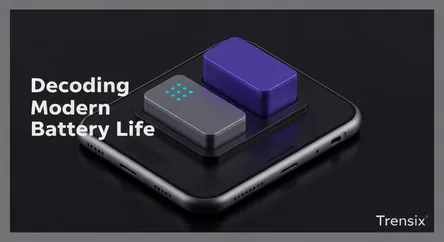Technology
Decoding Modern Battery Life

Ever wonder why your gadget's battery drains so fast? We explain what battery life is, why it's a key tech trend, and how it impacts your daily use.
What is it?
Battery life is the amount of time a device, such as a smartphone or laptop, can operate on a single full charge before needing to be recharged. It's determined by the battery's capacity, often expressed in milliampere-hours (mAh), and the device's power consumption. Most modern gadgets use rechargeable lithium-ion (Li-ion) batteries, valued for their high energy density. However, all batteries degrade over time, a concept known as "battery health," which reduces the maximum charge they can hold with each cycle.
Why is it trending?
As our lives become increasingly tethered to portable electronics, battery life has become a critical feature and a major marketing battleground. The demand for thinner, more powerful devices with larger, brighter screens puts immense strain on batteries. Consequently, innovations in faster charging, more efficient processors, and software optimizations are constantly in the news. Consumers now prioritize longevity, making battery performance a deciding factor when purchasing new gadgets, from electric vehicles to wireless earbuds, driving the trend forward.
How does it affect people?
Battery life directly impacts our freedom and mobility. It dictates how long we can work or be entertained away from a power outlet, leading to a phenomenon known as "low-battery anxiety." This concern influences daily behaviors, such as carrying portable power banks, choosing seats near outlets, and dimming screens to conserve power. It also shapes purchasing decisions, often leading users to choose a slightly less powerful device if it offers significantly better endurance, highlighting the practical trade-offs between raw performance and everyday usability in our connected world.